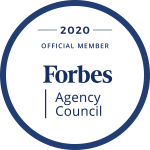Most B2B company websites, across all industries, contain some combination of self-produced “owned media” content, including blog posts, case studies, white papers, podcasts, archived webinars, and event calendars. A significantly smaller number of those websites, however, contain any publicity (earned media) that showcase the company’s intellectual capital, success stories, products and services, or people.
There are 3 reasons why most B2B companies do not pursue earned media:
They fear the lack of editorial control. The intrinsic value, as well as the inherent risks, related to earned media – whether the coverage is solicited by the company, or in response to a media inquiry – is that bona fide journalists from respected media sources are expected to deliver fact-based, objective reporting and / or opinions. Despite the erosion of public trust in “fake news” (mostly related to political and world news reporting), business and industry trade media sources continue to have a high degree of credibility and influence.
Over an after-hours cocktail, most corporate clients will admit to their PR firm flack that one unspoken reason for their engagement is to serve in a risk management capacity. Simply put, if the CEO is looking for a head to roll following negative media coverage, the outside PR rep serves as a convenient scapegoat, and the CMO’s career can remain intact.
Career risk notwithstanding, many companies have legitimate concerns based on fear of being misquoted, or based on dealing with a journalist who either does not understand their business or covers the story with a preconceived agenda.
[[What these companies fail to understand: There are ways to benefit from the market exposure and inherent 3rd party endorsement of media coverage without losing control over editorial content. For example, bona fide bylined articles (not pay-to-play “native” content), authored by company subject matter experts on relevant topics, written in a non-self-serving manner, provide all the benefits of earned media without the risk of being misquoted or represented in a negative manner.]]
They don’t know how to generate positive coverage. The most valuable type of media coverage – in terms of having a positive, near- and long-term impact – is written by professional journalists associated with respected media sources. Their job is to present “balanced” coverage, which means it will most always include some information that’s considered to be negative by the company, product, or individual that’s featured in the story.
In advance of the media target research, selection, and “pitching” logistics involved in seeking a staff-written story, a company first needs to:
- Be confident that the coverage they’re seeking is of likely interest to the journalist, and based on accurate facts and tangible evidence to support the proposed story;
- Accept the fact that reporting may include some negative or contrarian information;
- Identify the most likely or “worst case” details a journalist may want to include in the story, and be prepared to address those issues; and
- Believe strongly that the net positive aspects of the coverage will far outweigh any potential negative information that’s included.
[[What these companies fail to understand: When a journalist accepts a story proposal from a company that’s done its homework – both in terms of supporting their story with facts and outcomes, and in assessing the “balanced reporting” risks – there is an extremely high likelihood that the coverage will be positive, and of benefit to the company.]]
They don’t appreciate the power of earned media. In ways that really matter for companies, notably lead generation, market engagement and revenue generation, no other type of marketing content compares with earned media exposure.
Here’s a real-life example: The business units of Travelers Group, prior to its combination with Citibank, included Travelers Insurance and Primerica; which represented two very different insurance categories and operating cultures. Travelers Insurance sold whole life coverage through full-time professional insurance agents, while Primerica sold term life insurance through its part-time sales force, consisting of teachers, fire fighters and other “blue collar” workers.
Historically, the insurance industry looked down upon term life insurance, and had low regard for part-time agents. With two very different products and cultures under its red umbrella, and with the intention to gain market share in the term life insurance market, Travelers Group set out to reposition Primerica as a legitimate insurance carrier that provided a worthwhile product to customers.
Based on significant improvements in sales practices and compliance it had instituted at Primerica, and with the expectation that any coverage would include Primerica’s prior shortcomings, Travelers Group pitched a “transformation” story to Best’s Review, one of the insurance industry’s most respected publications.
Their calculated risk paid off. Bigtime. The headline of the Best’s Review cover story read: “Primerica’s Metamorphosis: The “termites” of the life insurance industry have been reborn under the Travelers Group umbrella as financial planners to the underserved middle class.”
That article not only became the most requested reprint in the history of Best’s Review, and an important part of the sales kit used by Primerica’s part-time agents; the media coverage was also recognized as the catalyst for a significant and sustained increase in term life sales for Primerica, and as an effective tool for recruitment of new part-time agents.
[[What these companies fail to understand: Earned media is more difficult to achieve, and can involve a degree of risk, which can be managed. But in terms of return on marketing investment, and the potential to generate tangible business outcomes, no other marketing tactic comes close.]]









